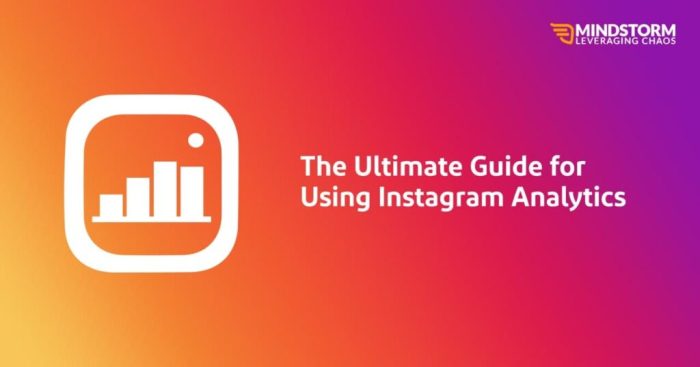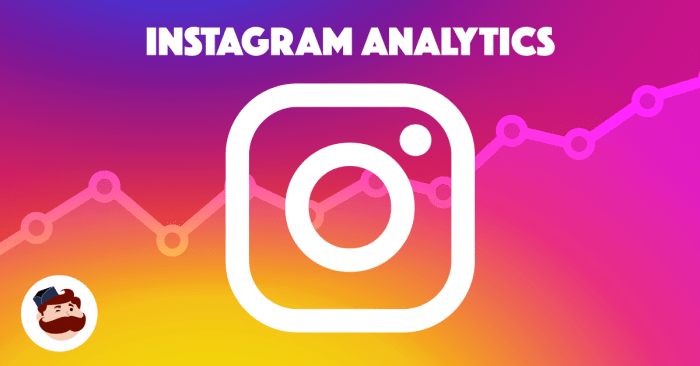Using Instagram Analytics opens up a world of possibilities for businesses looking to boost their online presence. Dive into the realm of data-driven decisions and audience engagement with this comprehensive guide.
Understanding Instagram Analytics: Using Instagram Analytics
Instagram analytics is the key to unlocking the potential of your business on social media. By analyzing data and insights, businesses can make informed decisions to improve their Instagram presence and engage with their audience effectively.
Importance of Instagram Analytics
Instagram analytics provides valuable information that can help businesses understand their audience, track their performance, and measure the effectiveness of their marketing strategies.
- Track Engagement: Instagram analytics can measure likes, comments, shares, and saves on your posts, allowing you to see what content resonates with your audience.
- Monitor Follower Growth: By tracking follower count and growth rate, businesses can gauge the impact of their content and marketing efforts on attracting new followers.
- Identify Optimal Posting Times: Instagram analytics can reveal the best times to post based on when your audience is most active, maximizing reach and engagement.
Key Metrics Tracked by Instagram Analytics
Instagram analytics offers a range of key metrics that can provide valuable insights into your audience and performance on the platform.
- Reach and Impressions: These metrics show how many unique users have seen your content and how many times it has been displayed.
- Engagement Rate: This metric calculates the level of interaction your content receives from your audience, indicating how well it resonates with them.
- Profile Visits: Tracking the number of visits to your profile can help you understand how effective your content is in driving user interest.
Understanding Audience Behavior with Instagram Analytics
Instagram analytics can provide valuable insights into your audience’s behavior, preferences, and interests, allowing you to tailor your content and marketing strategies accordingly.
- Demographics: Analyzing demographic data such as age, gender, location, and interests can help you target your content to specific audience segments.
- Content Performance: By tracking metrics like top-performing posts, popular hashtags, and engagement trends, you can identify what content resonates best with your audience.
- Referral Traffic: Monitoring the sources of traffic to your Instagram profile can help you understand how users are finding and interacting with your content.
Setting Up Instagram Analytics

To access Instagram analytics, follow these steps:
- Open the Instagram app on your mobile device.
- Go to your profile and tap on the three horizontal lines in the top right corner.
- Select “Insights” from the menu options.
- Here you can view your account’s analytics, including data on your posts, stories, and audience.
Types of Data in Instagram Analytics, Using Instagram Analytics
- Engagement Metrics: Includes likes, comments, shares, and saves on your posts.
- Reach and Impressions: Shows how many users have seen your content and how many times it has been displayed.
- Profile Insights: Provides information on your audience demographics, including age, gender, location, and when they are most active.
Tools and Features in Instagram Analytics
- Activity: Monitor how your content is performing and track your follower growth.
- Content: Analyze the performance of your posts and stories to see what resonates with your audience.
- Audience: Understand who your followers are and when they are most active to optimize your posting schedule.
- IGTV: Track the performance of your IGTV videos and see how they are engaging your audience.
Interpreting Instagram Analytics Data
When it comes to interpreting Instagram analytics data, it’s important to understand the key metrics that can help you gauge the performance of your account. This includes engagement metrics like likes, comments, and shares, as well as reach and impressions metrics that provide insight into how far your content is reaching. Additionally, analyzing audience demographics and behavior can give you valuable information on who your followers are and how they interact with your posts.
Engagement Metrics: Likes, Comments, Shares
- Likes: The number of likes your posts receive can indicate how well your content is resonating with your audience. The more likes, the more engaging your posts are.
- Comments: Comments show direct interaction with your content. High comment counts can signify a strong connection with your followers.
- Shares: When your content is shared, it reaches a wider audience and can increase your reach. Shares indicate that your content is valuable enough for others to pass along.
Reach and Impressions Metrics
- Reach: Reach measures the number of unique accounts that have seen your post. It’s a good indicator of how many people are exposed to your content.
- Impressions: Impressions show how many times your post has been viewed, including repeat views from the same accounts. It gives you an idea of overall visibility.
Analyzing Audience Demographics and Behavior
- Demographics: Instagram analytics can provide insights into the age, gender, location, and interests of your followers. Understanding your audience demographics can help tailor your content to better resonate with them.
- Behavior: By looking at metrics like when your followers are most active, what type of content they engage with the most, and where they are coming from, you can optimize your posting strategy for maximum impact.
Improving Strategy with Instagram Analytics

Now that we have a good grasp of how to use Instagram analytics, it’s time to take things up a notch and improve our overall strategy. By analyzing the data provided by Instagram analytics, we can gain valuable insights that can help us optimize our content and create targeted campaigns.
Designing a Strategy Based on Insights
One of the key benefits of using Instagram analytics is the ability to design a strategy based on the insights gained from the data. By analyzing metrics such as engagement rates, reach, and audience demographics, we can tailor our content to better resonate with our target audience. This could involve posting at specific times when our audience is most active, or creating content that aligns with their interests and preferences.
Optimizing Content Based on Analytics Findings
Another crucial aspect of improving our strategy with Instagram analytics is optimizing our content based on the findings. For example, if we notice that a certain type of post is performing exceptionally well in terms of engagement, we can create more of that content to capitalize on its success. By constantly monitoring and analyzing our analytics data, we can fine-tune our content strategy to ensure maximum impact.
Creating a Targeted Campaign with Instagram Analytics
Using Instagram analytics, we can also create targeted campaigns that are specifically tailored to reach a specific audience. By leveraging data on audience demographics, interests, and behaviors, we can design campaigns that are more likely to resonate with our target market. This could involve using targeted ads, collaborations with influencers who appeal to our audience, or running promotions that are tailored to specific segments of our followers.